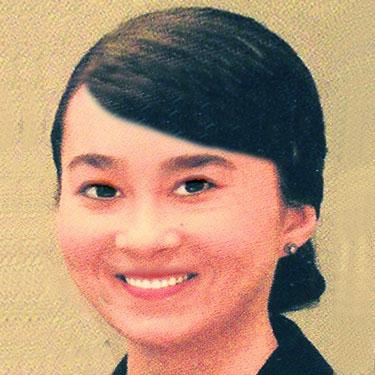英文病历写作-医疗记录回顾
作者:古龙 2009-07-04




语际翻译公司 转载请注明https://www.scientrans.com
∗本栏目部分文章内容来自互联网,部分已经过本站编辑和整理,如有版权事宜请联系Email/MSN jesczhao@hotmail.com
MEDICAL RECORD REVIEW
医疗记录回顾
A detailed, current medical record can be an invaluable asset for patient evaluation. The patient's “old” medical records should be thoroughly reviewed at the time of admission to develop a “framework” for the current medical history and history of present illness (HPI). Often this information is vital in understanding the patient’s immediate condition.
A periodic review of the initial history and physical exam record is useful to remind the team members as well as to orient new team members concerning the patient’s current problems. Often it’s helpful to review the patient’s “active” problem list each day when making rounds.
一份详细的当前病历对患者的评估来说是一种无价的财富。在入院时对病人的旧病历进行全面的回顾有助于建立现病史的框架。通常这些信息对于理解病人目前的情况是很重要的。
定期回顾原始病史和体检记录能帮助医疗小组成员以及新成员记住病人目前的问题。此外,每天查房时回顾病人目前的问题也很有帮助。
When recording the history and physical, the physician should follow several rules:
1. Record all pertinent data.
2. Avoid extraneous data.
3. Use common terms.
4. Avoid nonstandard abbreviations.
5. Be objective.
6. Use diagrams or pictures when indicated.
All too often a review of the nurses’ notes is neglected. Such information allows the clinician to follow patient progress during the previous 24 hrs. period. Particular note should be made of the vital signs; blood pressure, pulse, body temperature and respirations.
当记录病史和体检情况时,医生们应遵循以下几个原则:
1. 记录所有相关资料。
2. 避免无关的资料。
3. 使用普通的术语。
4. 避免使用不标准的缩写。
5. 要客观。
6. 必要时可使用示意图说明。
很多情况下护理记录常常会被忽略。而护理记录可给医生提供过去24小时内病人的病情变化,其中应特别记录生命体征包括血压、脉搏、体温和呼吸。
Also fluid intake and urine output is often recorded and should be noted and reported on rounds. As the team evaluates the patient each day on rounds, detailed patient information will promote a more rational approach to patient care. If the nurse records an unusually high or low BP or pulse, this should be re - checked by the physician.
此外,还应记录摄人液体量及尿量以便在查房时报告。医疗小组每天查房时,获得病人的详细信息有助于制定更合理的诊疗方案。当护士记录到血压或脉搏出现异常的增高或降低时,应由医生重新检查。
Other important information sought from the nurses notes include any recorded incidents during the last 24 hrs, such as record of pain episodes, GI distress such as vomiting or diarrhea, febrile episodes or episodes of confusion. Since the nurse spends much more time at the patient's bedside than the physician, her monitoring and report of the patient's condition is extremely valuable and should never be overlooked. The nurse must be respected and treated with courtesy, as she is an integral member of the health care team who can often provide valuable information and provide invaluable assistance in care of the patient.
护理记录可以提供的其他重要信息包括:过去24小 时内记下的任何事件如疼痛的发作、胃肠道不适如呕吐或腹泻、发热或意识模糊发作。由于护士在病人床边的时间比医生更长,所以她们对病人的观察和记录具有非 常重要的价值,不应被忽视。应该尊重并礼貌地和护士相处,因为她们也是医疗小组中不可缺少的一员,常能在医疗服务中提供重要的信息和帮助。
In each patient’s medical chart, a “Problem List” should be recorded. This lists each problem separately for example, (1) Pneumonia, (2) CHF, (3) Hypertension. A progress note should be written for each “active” problem.
Detailed daily progress notes recorded in the patient's medical record are valuable for patient assessment. Such a record is helpful for consultants, attending physicians and nurses as it enables them to ascertain the patient’s progress. When writing progress notes, it's helpful to follow the SOAP format.
在每一位病人的病历中应有一份问题列表。每个问题应单独列出,如(1)肺炎,(2)充血性心力衰竭,(3)高血压病。对每个“活动”的问题都应在病程记录中记录。
每天在病历中详细记录的病程记录对于病人的评估来说非常有价值。这种记录能帮助顾问医生、主治医生和护士了解病人病情的发展变化。当书写病程记录时,遵循SOAP的格式会比较有帮助。
S = subjective -- This section usually includes a description of patient complaints and symptoms. These should be recorded in the patient’s own words.
O = objective -- This section records pertinent patient physical exam findings including vital signs as well as pertinent recent x- ray, lab and biopsy data. Avoid the notation “vital signs – stable”. A blood pressure of 100/60 in a patient with a history of hypertension may represent relative “hypotension” with significant hemodynamic consequences.
S = subjective主观部分--这部分通常包括对病人主诉和症状的描述,应该用病人自己的语言来表达。
O = objective客观部分--这部分记录病人的体格检查结果,包括生命体征,以及相关的最近的X线检查、实验室检查和活检资料。避免书写“生命体征平稳”。对一位有高血压病史的病人来说,100/60的血压就可能代表相对的“低血压”,可能会导致严重的血流动力学后果。
A-- assessment --This section is often the most neglected in the progress note. However, it is perhaps the most important as decisions regarding selection of diagnostic test and treatment plans are based upon the assessment. A differential diagnosis should be included in this section for problems that have not been clearly elucidated.
P =plan--In this section is recorded the treatment plan including estimated length of treatment, and discharge plans.
A = assessment评估--这一部分在病程记录中最常被忽略。然而这部分却可能是最重要的,因为辅助检查的选择和治疗方案的制订常基于对病人的评估而作出。当有未明确的疾病情况时,这一部分应包括鉴别诊断。
P = plan计划--这部分记录治疗计划包括预计的治疗时间和出院计划。
Following is a sample progress note for a pneumonia patient:
S. Patient c/o cough productive of blood - streaked sputum. He denies any dyspnea.
O: Maximum temp. 38. 5, BP 90/60 R 24, pulse 100, 02 sat 91%
Lung auscultation – rt. mid-lung crackles posterior
Chest X-ray -- resolving rt. middle lobe infiltrate
Sputum and blood cultures -- pending
以下是一位肺炎病人的病程记录样本:
S:病人咳嗽、咳痰,痰中带血丝,否认有呼吸困难
O:最高体温38.5oC,BP 90/60,R 24,脉搏100,O2饱和度91%
肺部听诊--右中肺闻及湿罗音
胸透片--右中肺渗出在吸收
痰培养和血培养--尚无结果
A:
1. RML pneumonia -- suspect possible bronchial obstruction from tumor
2. COPD
3. Nicotine dependence
P:
1. Continue antibiotics -- Azithromycin and Ceftriaxone
2. Bronchoscopy tomorrow
3. Nicotine patch
A:
1. 右中肺炎--可能由肿瘤阻塞支气管引起
2. 慢性支气管炎
3. 尼古丁依赖
P:
1. 续用抗生素--阿奇霉素和头孢曲松
2. 明行支气管镜检查
3. 尼古丁贴片
There should be a separate SOAP progress note for each “active” problem. An “active” problem is one that requires treatment during the current hospitalization. For example a patient may be admitted with CHF and GI bleeding. Each day both problems should be evaluated at the bedside reviewing the history, physical findings and recent lab data. These data should all be recorded in two separate progress notes addressing each specific problem.
对每个“活动”的问题都应有独立的S()AP病程记录。所谓“活动”的问题是指目前住院需要治疗的问题。例如一位病人可能因为充血性心力衰竭和消化道出血住院。每天在床边应通过回顾病史、体检和最近的实验室检查资料来评估这两个问题。应在两个不同的病程记录里记录这些资料来说明每个问题。 医学 全在.线提供
Progress notes must be current; not only should their date be recorded, but ideally the time of day recorded. Occasionally with critically ill patients, it will be necessary to record several progress notes during the same day. Recently, a medical student informed me that she observed a group of medical students busily writing progress notes in charts of patients that had been previously discharged two weeks prior. Such practice is not only useless, but may be “legally” challenged in court. It is the attending physician’s responsibility to ensure that his junior staff record progress notes daily. The attending physician should review these notes regularly to ensure compliance.
病程记录应及时记录,不仅日期应写明,最好也写明时间。遇到危重病人时,同一天里可能要记好几次病程记录。最近有位医学生告诉我有些医学生在忙碌地补写2周前已经出院病人的病程记录。这种做法不仅没用,而且可能会受到法律的制裁。主诊医生应负起责任,督促低年资医生每天完成病程记录。主诊医生应定期检查病程记录以确保按时完成。
Operative or procedure notes must also be written or dictated immediately post- op in order to allow ICU physicians or others involved in the patient's care to understand the surgical procedure and any possible intraoperative complications. They should include the following: 医.学 全,在.线,提供www.med126.com
l Date and time:
l Procedure done:
l Indications:
手术和操作记录应在完成后及时记录,以使ICU医生或其他医务人员了解手术过程和术中可能发生的并发症。记录应包括:
l 日期和时间:
l 所做的手术或操作:
l 适应证:
l Patient consent: Document that the indications, risks and alternative treatments were explained to the patient or responsible family member. Note that the patient was given a chance to ask questions and that the patient consented to the procedure in writing.
l Lab tests: Pertinent labs--protime- INR, PTT, CBC
l Anesthesia:
l Description of Procedure: Describe the procedure, including sterile prep, anesthesia method, patient position, devices used, anatomic location of procedure, and outcome.
l 病人的同意书:说明已把手术指征、风险和可选的其他治疗方法向病人或负责的家属讲明。注意应给病人提问的机会,取得书面同意。
l 实验室检查:相关的如PT—INR、PTT、CBC
l 麻醉:
l 手术过程描述:描述手术过程,包括消毒、麻醉方式、病人体位、所用的器械、手术的解剖定位和结果。
The final progress note prior to discharge should be a “discharge note”. It should include:
l Date/time:
l Diagnoses:
l Treatment:
l Studies Performed:
l Discharge medications:
l Follow - up Arrangements: (6)
Within one week of discharge, a discharge summary should be prepared that includes the following information:
l Patient's name and medical record number:
出院前的最后病程记录应是一个“出院录”。它应该包括:
l 日期和时间:
l 诊断:
l 治疗:
l 做过的检查:
l 出院带药:
l 随访计划:
出院后1周内,应完成出院小结,包括下列信息:
l 病人的姓名和病历号码:
l Date of admission:
l Date of discharge:
l Admitting diagnosis:
l Discharge diagnosis:
l Name of attending physician or team responsible for patient:
l Surgical or other procedures performed:
l Diagnostic tests performed:
l Brief history, pertinent physical exam and lab data:
l Hospital course:
l Patient’s condition at discharge:
l Discharge plan including follow- up appointment:
l Discharge medications:
l Problem list including all active and past problems:
l 入院日期:
l 出院日期:
l 入院诊断:
l 出院诊断:
l 主诊医生姓名或负责医疗小组名字:
l 做过的外科手术或操作:
l 做过的检查:
l 简短病史、相关体检和实验室资料:
l 住院过程:
l 病人出院时的身体状况:
l 出院计划包括随访安排:
l 出院带药:
l 所有当前和既往疾病的列表:
The discharge summary is extremely valuable for follow – up care both to the physician who will see the patient in the outpatient clinic and the admitting team who may admit the patient in the future.
出院小结对病人出院后看门诊医生和今后再次住院医疗小组的随访很有价值。
When a patient is re - admitted, the old chart should be immediately obtained from the medical records dept. even while the patient is still in the E. IL A procedure and policy must be implemented by the hospital administration that allows access to medical records even during the evening and night. The value of an old chart and especially prior discharge summaries cannot be overemphasized. Often the clue to the patient's current diagnosis may be related to prior illnesses recorded in the old chart. The old chart should accompany the patient from the ER to the patient ward where he's admitted. Each physician or consultant involved in the patient's care must review the old chart taking special note of the discharge summary. The prior medical record is also valuable for comparison of current data with previous data; for example an old EKG that remains unchanged may help to rule out an acute myocardial infarction. Special note should be made of prior drug reactions and complications associated with procedures.
来源:医学全在线
- 评论
- seme:文章内容文章内容文章内容文章内容文章内容文章内容文章内容文章内容文章内容 章内容文章内容文章内容文章内容文章内容
- seme:文章内容文章内容文章内容文章内容文章内容文章内容文章内容文章内容文章内容 章内容文章内容文章内容文章内容文章内容

- 医生护士英语会话(11):西药(2)
2009-6-24 0:18:19 - 病人:早上好,大夫。 Patient: Good morning, doctor. ...
- 医生护士英语会话(10):西药(1)
2009-6-24 0:15:35 - 病人:我严重感冒。另外,还伴有头疼。请问我应该服用些什么药呢? Patient: I have...
- 第四届IEEE生物信息与生…
2009-6-30 19:42:01 - 基本信息 主办单位: 四川大学,IEEE生物医学工程协会(EMBS) 承办单位 开始日期 2010/06/18 结束日期 截稿日期 2009/1...
- 第九届全国光电技术学术…
2009-6-30 19:35:58 - 基本信息主办单位: 中国宇航学会光电技术专业委员会承办单位 开始日期 2009/11/01结束日期 截稿日期 2009...
















